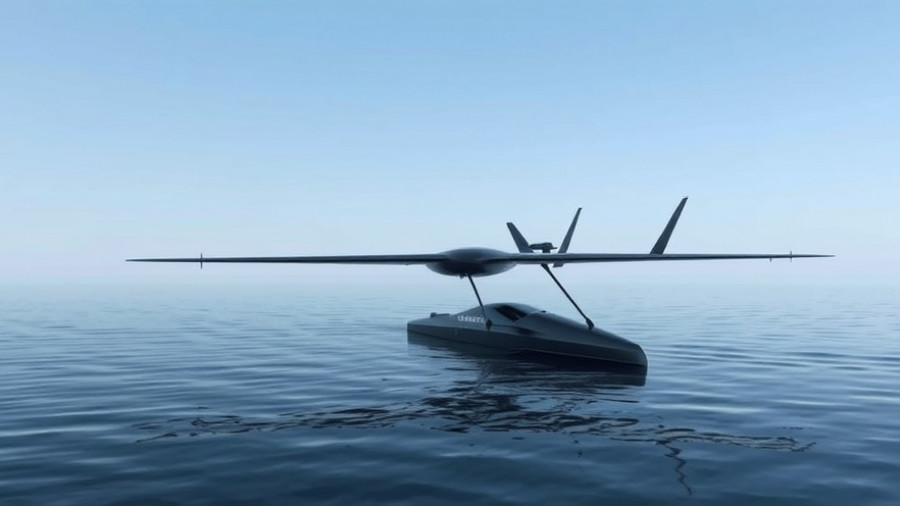
Unveiling the Future: China's Mysterious Trimaran Drone Ship
Recent satellite imagery has revealed a striking new addition to China's naval capabilities: an unusual black trimaran drone ship at the Huangpu Shipyard. This vessel seems to merge features characteristic of both surface ships and submarines, sparking widespread speculation about its purpose and design. Shrouded in tarpaulins, its exact specifications and role remain a mystery, but it represents a key advancement in China's ongoing pursuit of innovative maritime technology.
Historical Context and Background
China has significantly expanded its naval fleet in recent years, focusing on uncrewed surface vessels (USVs) to enhance its maritime strategy. The newly spotted trimaran is part of this broader movement that includes advancements like the U.S. Navy's Sea Hunter, which has driven China to develop its own high-speed, uncrewed warships. As these technologies evolve, countries worldwide are racing to keep up, with China propelled by its substantial shipbuilding infrastructure and engineering talent.
A Closer Look at the Design
Reports suggest that this trimaran design features an uncrewed or minimally crewed structure, which would allow for heightened operational capabilities. The sleek shape of the hull hints at a focus on speed, suitable for maritime patrol and potential combat scenarios. Notably, the vessel sports a vertical launch system (VLS) on its deck—a design element that could facilitate the deployment of missiles or other aerial drones, serving multiple strategic roles.
Future Predictions: What Lies Ahead for Naval Warfare?
As the trimaran drone ship enters the spotlight, it raises questions about the future of naval warfare and the role of unmanned vessels. With the potential to operate at high speeds, this drone ship could redefine maritime strategy by providing fleet support without risking human lives. The evolution of such ships might lead to a significant shift in how maritime engagements are conducted, emphasizing automation, stealth, and integrated drone systems.
Potential Roles: Versatile and Multi-Functional Applications
The vessel could assume various roles, from acting as a high-speed arsenal ship to supporting surveillance and reconnaissance missions. The possibility of using it to carry unmanned aerial vehicles (UAVs) opens doors to tactical advantages in scouting and intelligence-gathering. This flexibility could enhance China's operational capabilities in contested waters like the South China Sea, challenging adversaries to reconsider their strategies.
Emotional and Human Interest Angles
The minds behind such advanced military technologies are not mere engineers, but a coalition of dedicated experts fueled by their commitment to national security and innovation. This new trimaran embodies their hard work and determination in bolstering China's naval forces. The anticipation surrounding this project also reflects a mix of intrigue and concern—from both military analysts and the public—over the implications of rapidly advancing military technologies.
Conclusion: A Call to Awareness
The unveiling of the black trimaran drone ship serves as a pivotal moment in maritime history, spotlighting the lengths to which nations will go to secure their interests at sea. As emerging technologies continuously adapt to shifting global dynamics, it is crucial for citizens and policymakers alike to remain informed and engaged with these developments. Understanding these advancements may very well shape the discourse on international maritime security and influence policy decisions for decades to come.
 Add Row
Add Row  Add
Add 




Write A Comment